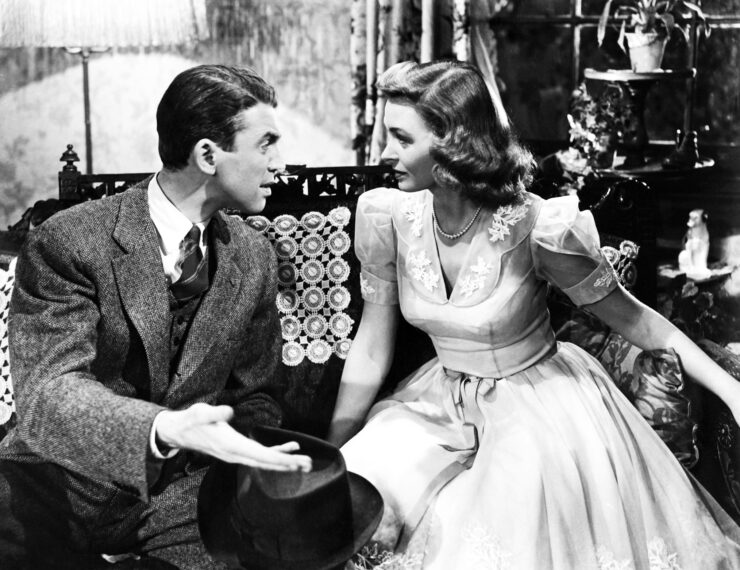Everyone has their own holiday traditions when it comes to television, whether it’s an annual viewing of Elf or an animated favorite like A Charlie Brown Christmas, but one remains quintessential and that’s Frank Capra‘s black-and-white classic It’s a Wonderful Life.
Not originally made as a holiday film, It’s a Wonderful Life wasn’t initially considered a box office success, but it went on to become a holiday classic and TV tradition. Focusing on the story of George Bailey (James Stewart), the film chronicles his life from childhood to a pivotal point in time where he’s poised to lose everything.
On the brink of committing suicide to try and salvage his family’s name, legacy, and money, things are dire for the building and loan banker on Christmas Eve. As prayers abound for his safety, angel Clarence (Henry Travers), who has yet to earn his wings, is sent to help George in his hour of need.

(Credit: Everett Collection)
It’s a concept that may not work as well in a film today, but a story filled with plenty of simple and human themes relatable across the board regardless of religion or background. At its core, the film is about a man who has time and again sacrificed his own wants and desires, whether it’s travel, schooling, or career, to help those around him, and even when he finds himself in hot water, he considers his family’s future at the cost of his own life.
But why should we care? Following George through his life, including his romance with his wife Mary (Donna Reed) helps build emotional stakes. We see his bond with his brother Harry (Todd Karns), who would have died had George not saved him after falling through thin ice as a child. And then there’s the love for his community, friends, and children which is palpable through his actions and desperate need to protect it all.
When money is misplaced by his forgetful uncle Billy (Thomas Mitchell) and snagged by nemesis Mr. Potter (Lionel Barrymore), George is transformed for the worst and finds himself ready to jump from a bridge on the outskirts of his town Bedford Falls. It’s Clarence who helps show George all the ways everyone’s lives would be different without him that he begins to understand his own value.
Ultimately, George’s struggles are resolved when his community realizes the pickle he’s found himself in, and that the kindness and care he’s shown for decades ripples in the form of their financial help. In a world where we’re often faced with hopeless scenarios, it’s films like It’s a Wonderful Life that remind us of what’s important.
While other holiday TV shows and films may be just as nostalgic for viewers, none really drive a message home quite like this movie. Without fail, every holiday season, whenever I hear Harry Bailey toast his brother, George, “the richest man in town,” I can’t help but shed a tear because of its double meaning. The money is one thing, but in that sequence, George Bailey is emotionally rich, and isn’t that what we’re all striving for at the end of the day? After all, as Clarence’s note to George reads in the movie’s closing scene, “Remember, no man is a failure who has friends.”
It’s an emotionally satisfying conclusion to a nearly three-hour network viewing experience during the holiday season. And like any good book or film, each viewing experience is just marginally different from year to year as we all change with time. Needless to say, It’s a Wonderful Life is must-see TV still, almost eighty years after its debut.
More Headlines:

